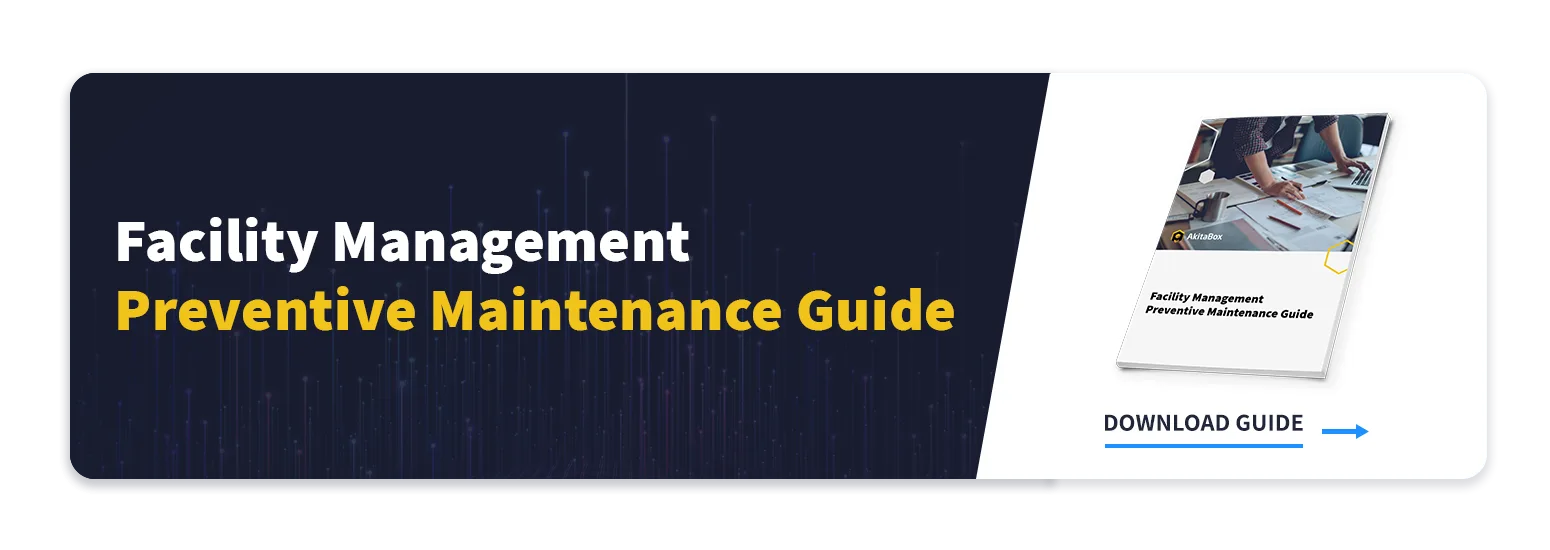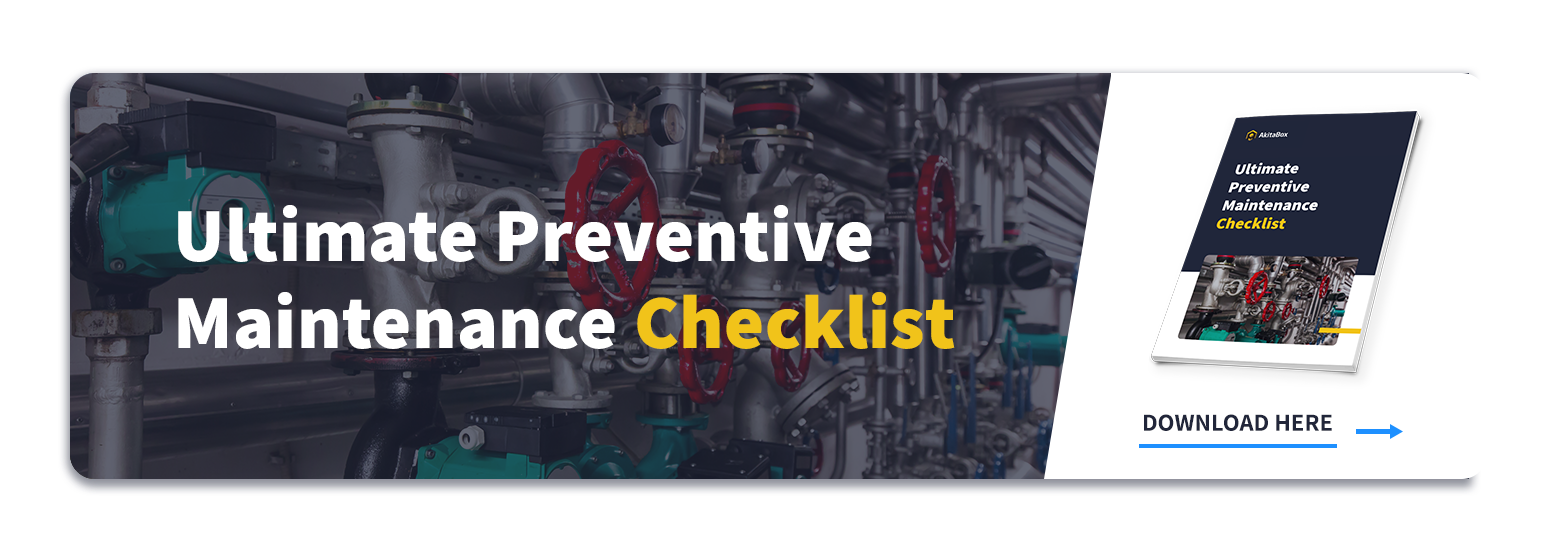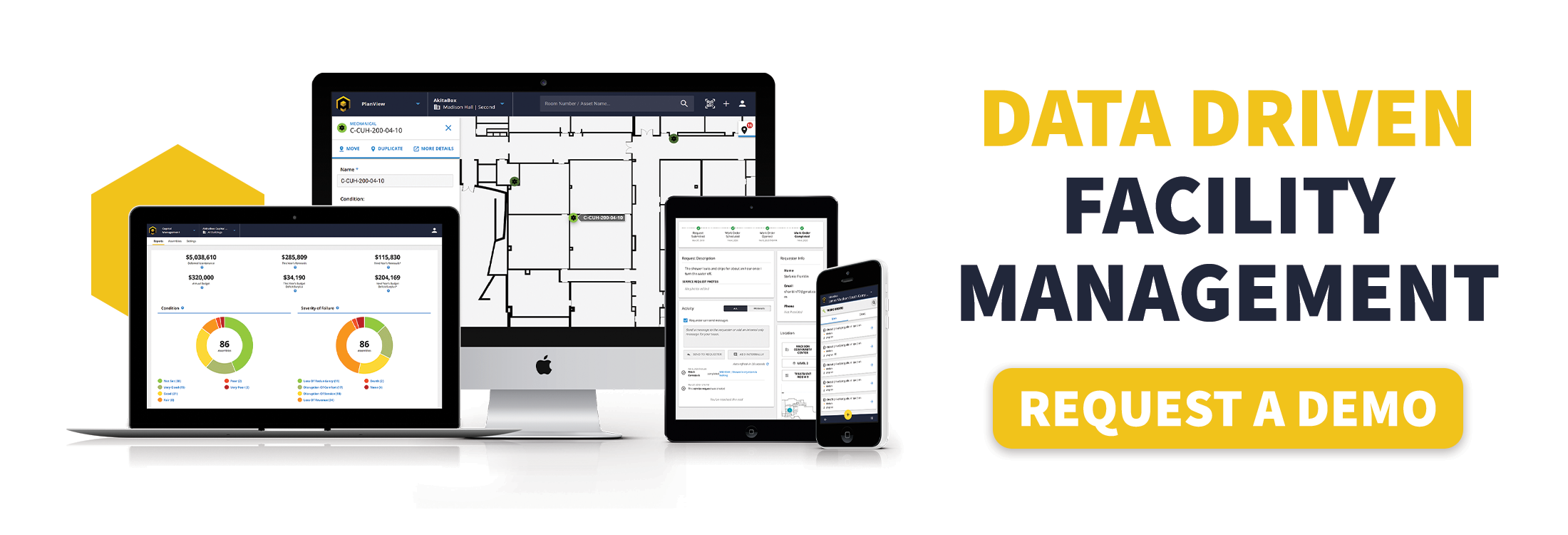The concept of preventive maintenance (PM) is becoming increasingly popular as facility managers research ways to boost their budgets and extend the useful life of assets. In this blog, we’ll explain the idea behind preventive maintenance (also called “preventative maintenance”), why it’s worth your time and how your facility can benefit from using it. Plus, we’ve included additional resources to help you create a winning PM program of your own this year.
By implementing a PM program, your facility will be on its way to higher efficiency, accuracy and profitability in no time.
What is Preventive Maintenance?
Preventive maintenance is a systematic approach to building operations that aims to identify and correct equipment failures before they actually happen. Unlike reactive maintenance, which occurs when equipment has already broken down, preventive maintenance is a more proactive approach to keeping assets in optimal working order.
To perform preventive maintenance, a facilities team will conduct several types of routine check-ups on equipment. Procedures may include (but are not limited to) testing, inspections, part replacements, measurements, lubrication, tightening and adjustments of equipment.
These procedures help facilities team stay on top of maintenance and deliver the right type of repairs when they are needed. Issues that are detected early can be fixed faster, which may extend the overall useful life of systems and equipment within a building.
The Top 5 Advantages of Using Preventive Maintenance
With the right tools and resources, facility managers can use preventive maintenance to transform the way they care for their buildings and grounds. Here are five reasons why adopting a PM program can benefit your facilities department and your organization as a whole.
Advantage #1: You’ll save money and waste less energy.
Costly repairs and replacements occur less often when equipment is maintained. While it’s nearly impossible to prevent all reactive maintenance, the likelihood of a major breakdown is minimal when a facilities department employs a preventive maintenance program. Regular maintenance can also lead to reduced energy bills. Equipment that works as expected is more likely to run efficiently and use less energy than unmaintained equipment.
Advantage #2: You’ll extend the useful life of critical equipment.
Boilers, HVAC systems, plumbing, air handling units and roofing are just a few examples of assets in a building that require consistent maintenance for optimal performance. Checking equipment regularly means they’ll last longer, since issues are spotted early and can be dealt with as needed. Equipment also remains in its best shape, therefore extending its useful lifetime.
Advantage #3: You’ll create a safer work environment for your team.
A majority of facility managers would agree that maintaining safety in their buildings is a top priority. Preventive maintenance can keep buildings safer and more secure. Equipment that meets safety standards is less likely to pose risk or cause serious harm to operators. With regular maintenance, dangerous and catastrophic equipment failures are reduced, making your facility a safer place for staff and occupants alike.
Advantage #4: You’ll significantly reduce unexpected disruptions and asset breakdowns.
Regular equipment checks mean you won’t be caught off guard if something goes wrong or breaks down. A preventive maintenance program will indicate when parts need to be replaced. This means that there will be little-to-no unexpected downtime, since you’ll have replacement parts and service technicians on hand for timely repairs. Replacing parts before they are damaged also means there will be less wear-and-tear compared to machines that are serviced using run-to-failure maintenance.
Advantage #5: You’ll be able to plan ahead and budget for upcoming maintenance.
Following a maintenance schedule means you’ll be better prepared to stick to your department’s allocated budget. Repairs are planned in advance, so all costs associated with replacement parts and repair personnel are factored into the department’s budget.
A preventive maintenance plan will also help you keep track of asset names, parts and contact information for repair personnel. As maintenance is performed throughout the year, you’ll know exactly what annual expenses to calculate for upcoming maintenance.
 A facility management software with asset mapping can vastly improve your preventive maintenance plan
A facility management software with asset mapping can vastly improve your preventive maintenance planFree Resources For Preventive Maintenance Planning
Many facility managers like the idea of preventive maintenance, but quickly become frustrated by not knowing where to start. The good news is that implementing a proactive process can be painless if building teams develop a solid strategy and use the right tools. Check out the following resources to get your team moving towards a more proactive maintenance strategy.
- “The Facility Management Preventive Maintenance Guide”
Read AkitaBox’s Facility Management Preventive Maintenance Guide to stay informed on the latest preventive maintenance strategies in the facility management industry. You’ll learn how to collect and update asset data, how to document facility audits and inspections, and how to effectively budget for your new PM program. - “Preventive Maintenance 101: The Key to Understanding and Implementing a Successful Program”
How well do you know preventive maintenance? Whether you’re a seasoned veteran or just looking to boost your knowledge, check out our comprehensive guide to preventive maintenance to learn more. - “How to Create a Preventive Maintenance Plan: PM Scheduling”
This blog explores the three critical components of implementing a successful preventive maintenance plan at your facility, including collecting data, integrating preventive maintenance schedules and assigning tasks to team members.
The Best Way to Make Preventive Maintenance Easier
Preventive maintenance plans can suffer if a department doesn’t have a reliable way to organize program information. The fastest, most efficient way to manage preventive maintenance is to use a facility management software with a PM scheduling module.
Software eliminates the need for bulky stacks of paper and cluttered spreadsheets. It can also reduce stress, improve departmental efficiency and support program automation. The right facility management software will send your team instant reminders of upcoming repairs and inspections. Your team will also have access to work order information and preventive maintenance protocols while in the field — a critical component of your team’s success.
Learn about the six benefits of using facility software for preventive maintenance here. Then, watch a demo of facility management software capabilities and how they can help your department become more successful.
READ NEXT:



